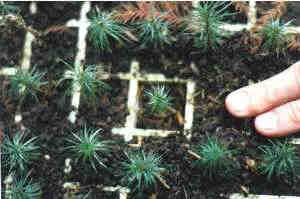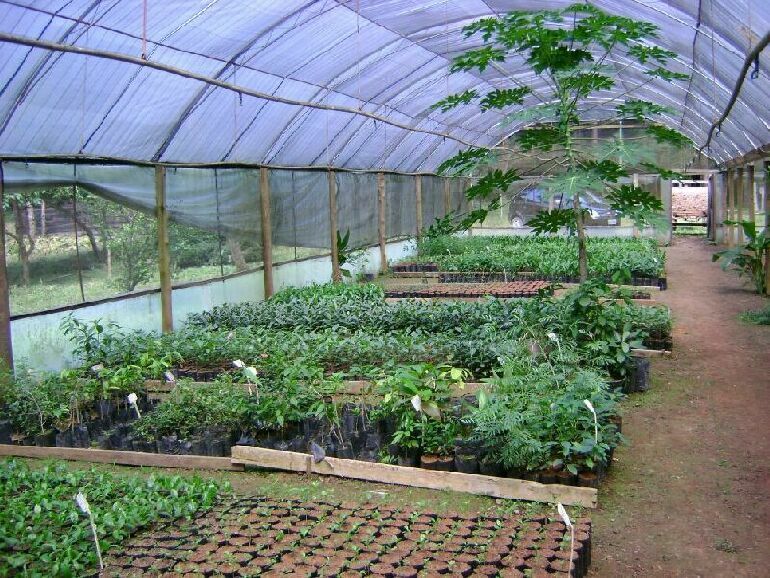.
| Some years
later, a proper greenhouse was built.
After this improvement, the
“collected-seedlings” were ready for
transplanting, after ONE
year. The land used for the
cultivation of Christmas trees was never
cleared for new plantations, due to W.
Hering’s firm intention of leaving 90 %
of the trees to
mature. During these
65 years, less than 10 % of the trees
planted were sold. Whenever a new
location was needed for "Christmas
Trees", an Eucalyptus covered area
was cleared and replaced with "China
firs" -Cunninghamias, Criptomeria
Japonicas, C.Elegans, Norfolk Pines
- Araucarias excelsa, Thuias-Europa,
etc. |
 |
| Anyone
aware of climatic conditions in Brazil,
can imagine the complexity of a
“Christmas Trees’-operation” there,
particularly during the hot summer days
- November/December. After over 40
years,a thinning was proceeded at the
old matured China Firs'-woods.
Surprisingly, Palm Trees (in portuguese:
Palmito Jussara (Euterpe edulis) which provides the
delicious,edible "palmtree-heart" )
started growing “spontaneously’’ among
the adult Firs, due to the ideal shade
and humidity conditions provided under
these trees. These seeds had
originally been spread around by birds
and mammals (monkeys) seeking shelter in
the Firs’ crowns. . |
 |
Countless
“Atlantic
forest” species of animals,as: “Bugio”
(the 'howler monkey' -
Alouatta fusca clamitans ), squirrels, deer, foxes (Vulpes vulpes), Brazilian ferrets (Galictis
cuja) also called "furão" as well as exotic tropical
birds etc., find shelter in this
protected environment.
Over the last twenty years a
security concrete wall has been
erected,surrounding the entire estate,
in order to prevent access of hunters as
well as any other "environmentally
unfriendly visitors". |
|


